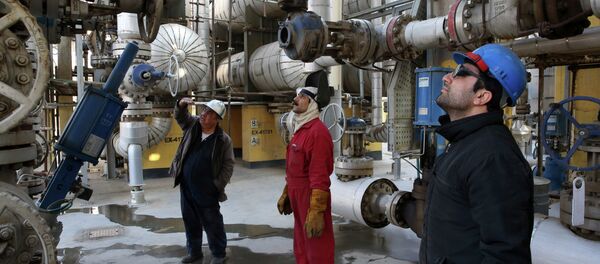In February 2014, price of oil was around $110 a barrel on global commodity exchanges. Today, the Brent benchmark crude extracted from the North Sea is hovering at $30 per barrel. The era of higher priced oil which began in 2011 now seems to be nearing its end.
Furthermore, taken in a historic perspective, the recent years are not typical: $20 a barrel was normal in the 1980-90s. In 1999, there were times when the oil price hardly reached $10. Could current events in the oil market be a signal of a similar tendency?
While economists and analysts have kept from predicting the future oil prices it is possible to outline the factors which have contributed the most to changing the global oil market.
Oil output increase in the US
As a result, the global market experienced a supply glut with the additional four millions barrels a day. This is equal to the daily output of three of Africa’s largest producers – Nigeria, Angola and Libya.
To a large extent, the US oil boom was stimulated by hydraulic fracturing or fracking. Despite the fact that the process is costly, fracking was still profitable, thanks to high global oil prices.
In late-2015, the US lifted a 40-year embargo on exports of its domestic-produced oil. The US will sell abroad only small amount of oil because its domestic consumption of oil is very high, but its reliance on foreign supplies is expected to decrease.
Oil output increase in Iraq
In 2015, Iraq ranked the second-fastest growing oil producer in the world. Despite the ongoing fight with Daesh militants, Iraq increased domestic output from 3.3 million in 2014 to 4.3 million barrels a day in 2015. Currently, Iraq is producing more oil than in 2003 before the US invasion. Its main oilfields are concentrated in Kurdish regions in northern Iraq.
Sanctions lifted against Iran
According to OPEC, Iran produces nearly three million barrels a day. The IEA expects it to be increase 300,000 barrels daily by the end of the year. This means, the global market will be even more oversupplied which is likely to affect pricing.
Underwater oil production in Brazil
In 2013-2015, Brazil also significantly increased its oil output, from 2.6 million to 3 million barrels a day. According to OPEC, in 2015 Brazil launched 72 new wellbores, and in 2014 – 87.
Brazil has become the world’s leader in super-deep drilling and offshore drilling.
However, the future of the Brazilian oil boom looks not so bright. Super-deep offshore drilling requires investments which will not be recouped with the current low prices. What is more, semi-national energy corporation Petrobras has been involved in a series of corruption scandals and has had to abandon many of its investment projects.
Saudi Arabia will not decrease output
On the other hand, Saudi Arabia, the world’s third-largest supplier, can decrease output to a point where prices will rise again.
Nevertheless, despite a record deficit of nearly $100 billion in 2015 due to falling oil revenues, Riyadh is ready to keep output unchanged and, consequently, ready to even lower global oil prices.
Perhaps, Saudi Arabia is ready to keep prices at a level which would make unprofitable other oil production techniques like fracking or super-deep drilling.
Concerns over China’s economy
The Chinese government officially expects growth of six percent in 2016, which at first glance does not look like a reason for concerns. However, investors say Beijing manipulates its output figures and hides the actual data. The slump in Chinese markets in early-2016 was translated as a signal that the Chinese economic miracle is exhausting.
Such prospects have been seeding concerns in global commodity markets. During the last decade, China’s oil consumption rose from 7 to 11 million a day. As a result, any signal of economic slump in China immediately shocks the oil market.
Warming winter in the northern hemisphere
According to the US National Oceanic and Atmospheric Administration (NOAA), 2015 has become the warmest year on official record since the 19th century. Due to the atmospheric phenomenon known as the El Nino Southern Oscillation, 2016 is expected to be warm too. Winter 2015/16 in the northern hemisphere was so warm that demand for heating fuel in the US, Europe and Japan significantly dropped, which in turn hit oil prices.
OPEC is no longer in full control of the market
In fact, OPEC can easily decrease output to make global prices soar again. Such a move would be logical since OPEC is a cartel organization with the purpose of maintaining oil price stability.
However, the organization has not done this so far. Some of its members have kept output unchanged while others have even increased production. It is obvious that OPEC is unable to control pricing in the market.






